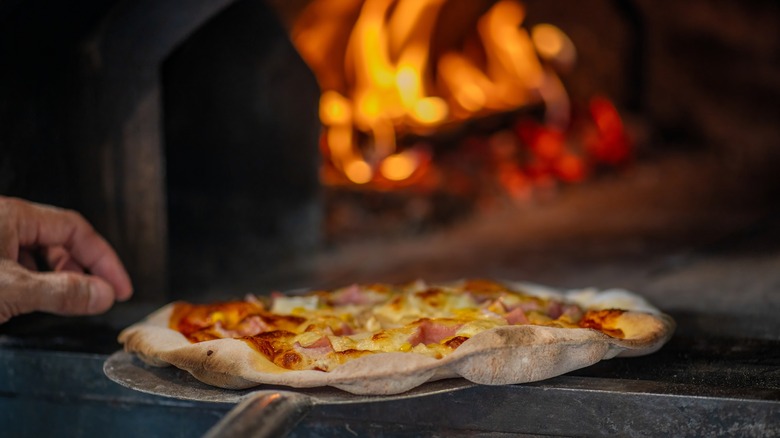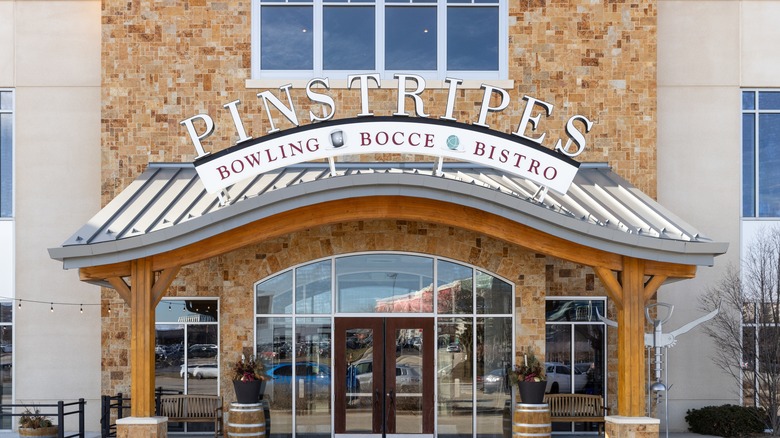
worradirek/Shutterstock
When it first opened in 2007, Italian bistro chain Pinstripes had a unique concept, mixing up casual dining with menu options like wood-fired pizza and craft cocktails with family-friendly (yet not overly kid-centric) entertainment in the form of bowling and bocce at its restaurants. The idea seems to have worked for a decade or so, but apparently no longer: In early September 2025, Pinstripes filed for chapter 11 bankruptcy, allowing it to restructure, so it hasn’t totally vanished yet.
Back in 2019, Pinstripes set its sights on opening over 100 restaurants across the country, and possibly internationally. By 2024, it hit 18 locations and was listed on the stock exchange, but neither of these successes would last: With its bankruptcy filing, it was forced to quickly cut back to just eight restaurants (three in Illinois and the other five scattered around the country). What partly tripped up Pinstripes was its restaurants’ physically large size: They were often larger than 25,000 or even 30,000 square feet and with capacity for close to 1,000 guests, with space for patios and, of course, those games. While the games only brought in about 20% of the chain’s revenue, the idea was that customers would stick around to play them, and therefore order more food and drinks while playing. Yet, getting such large restaurants up and running is an expensive endeavor, and Pinstripes took on a lot of debt to do that — so when profits fell short, it found itself far in the red.
The common reasons why Pinstripes and other chains are hurting right now

Joseph Hendrickson/Shutterstock
The reasons above are part of why Pinstripes had to file for bankruptcy, but the chain also fell victim to some other problems that have more broadly been affecting American restaurant chains in the last couple of years. This has led to some other notable bankruptcies, including big players like TGI Friday’s and Red Lobster (although it was also hurt by a questionable decision to sell bottomless shrimp to some customers) and some smaller chains like Texas’ Bar Louie and Massachusetts-based Italian chain Bertucci’s.
For many of these bankruptcies, the problems are considered to have started around the COVID era: Particularly for restaurants that served business crowds (including urban business districts), COVID lockdowns and the shift to working from home took those away; this was particularly pronounced for lunch service. But that’s just the start of the COVID-induced problems — the wave of inflation that came afterwards pushed up food costs. This put restaurants in a no-win situation: Either they reduce their profit margins, or pass the costs onto customers, who may dine out less frequently. That inflation is considered to be why Pinstripes’ restaurant revenue wasn’t as high as the company initially anticipated (which would have put it in a better place to pay off its debts). Not all restaurants are feeling this pain: Fast-casual chains are faring better, but a restaurant like Pinstripes with giant locations and more of a special occasion reputation isn’t able to make the same pivot to special offers like value meals.


Dining and Cooking